This is a continuation of a series of posts on the Nikon D850. You should be able to find all the posts about that camera in the Category List on the right sidebar, below the Articles widget. There’s a drop-down menu there that you can use to get to all the posts in this series; just look for “D850”. This is also a post about the Sony a7RIII, and is also tagged as such.
Yesterday I reported on the AF-S performance of the D850 with the Nikon 80-400 VR II, using a new format for presenting the results.
Earlier, I did a similar test of the Sony 100-400 on the a7RIII using the old format. To assist in comparing the way the two cameras autofocus, I’m presenting both data sets in the new format here.
The graph presents displacement of the image projected on the sensor from the desired green-channel focal plane. Negative numbers indicate front-focusing. The image-plane shift is in micrometers (um). The blue focus locations are separated from the red and green ones because of the longitudinal chromatic aberration (LoCA) of the lens. The dots indicate the results for each of the ten exposures at each f-stop. I’ve made lines indicating the average (aka mean or mu) of the sample set bolder and added thin lines above and below the means that are one standard deviation (sigma) away from it.
It is clear that there is a lot of focus shift in the Nikon, much more than the Sony. It looks like the Sony has more LoCA until you observe that the vertical scale is quite different in the above two graphs. The Nikon has far more focus shift and more shot-to-shot variation in focussed plane.
Here are the sizes of the circles of confusion (CoC) implied by the amount of defocusing:
As I mentioned yesterday, by setting the Nikon’s AF Adjustment to +15, the wide open accuracy can be improved, but then the stopped down results suffer. Leaving the AF Adjust at zero here provides a compromise solution if sharpness at all apertures is important.
This is a quite dramatic difference. The CoCs of the Sony camera and lens are less than one pixel pitch, while the Nikon pair often produces 4 or 5-pixel diameter blur circles. There are two reasons for the disparity. The Nikon lens has much more focus shift than the Sony; you’ll see that below. There is also far more shot-to-shot variation in focus with the Nikon.
To isolate the focus shift of the lenses from the corrections (or lack of same) introduced by the autofocus systems, Here are graphs where the lenses were manually focussed wide open, and left at that position for the whole f-stop seties.
The Sony lens has negligible focus shift, and the Nikon has a lot.
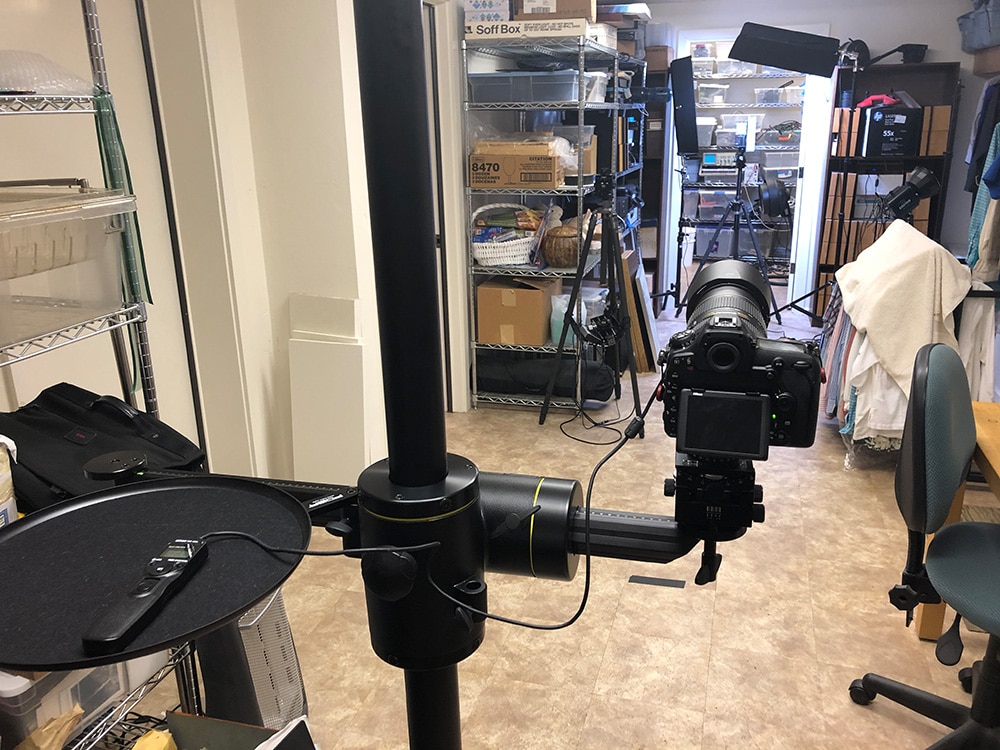
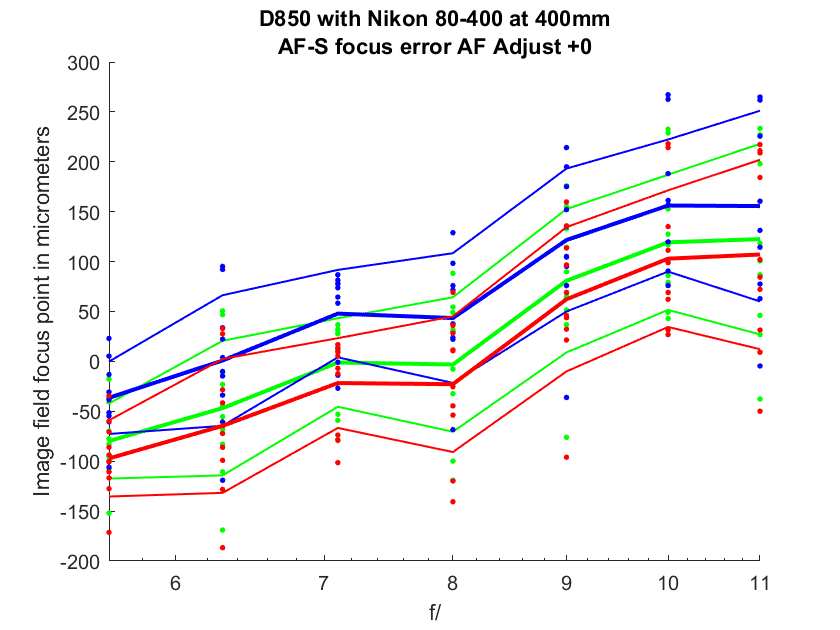
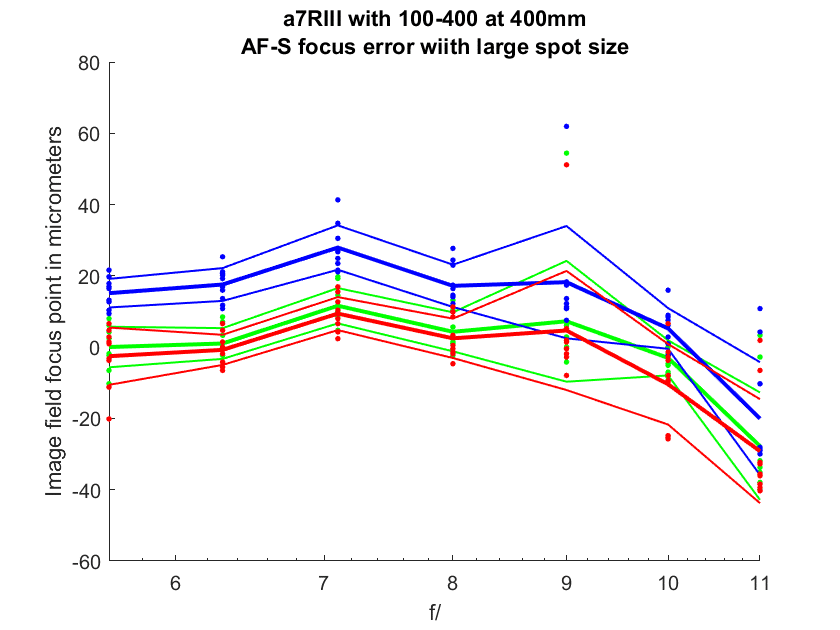
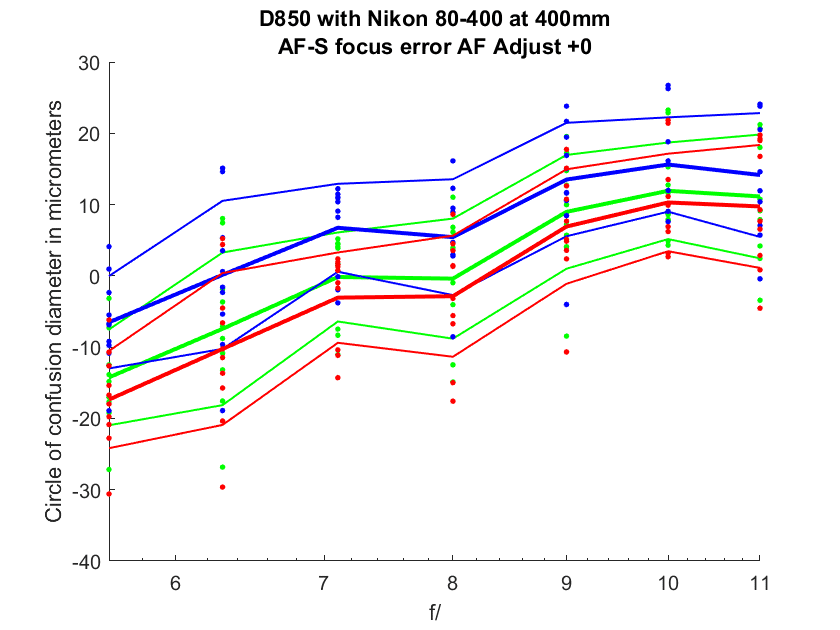
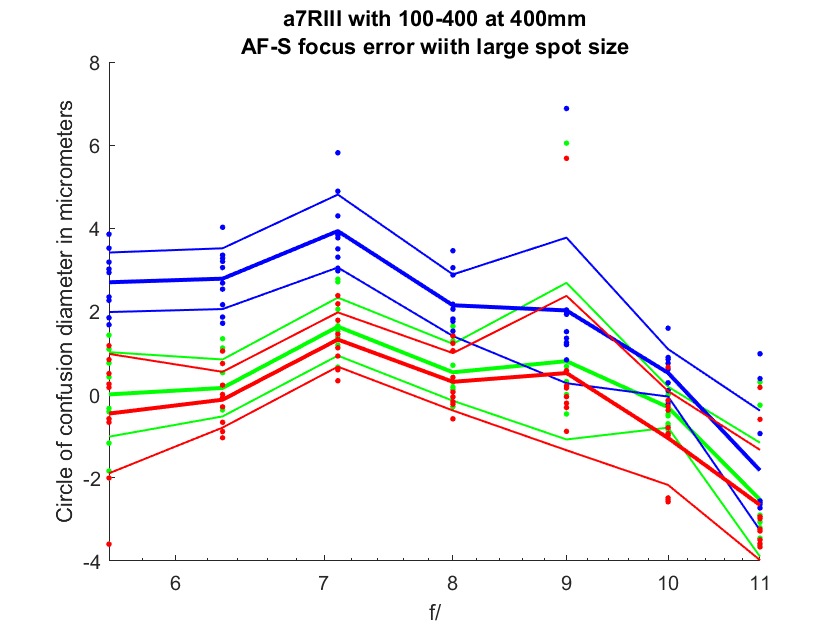
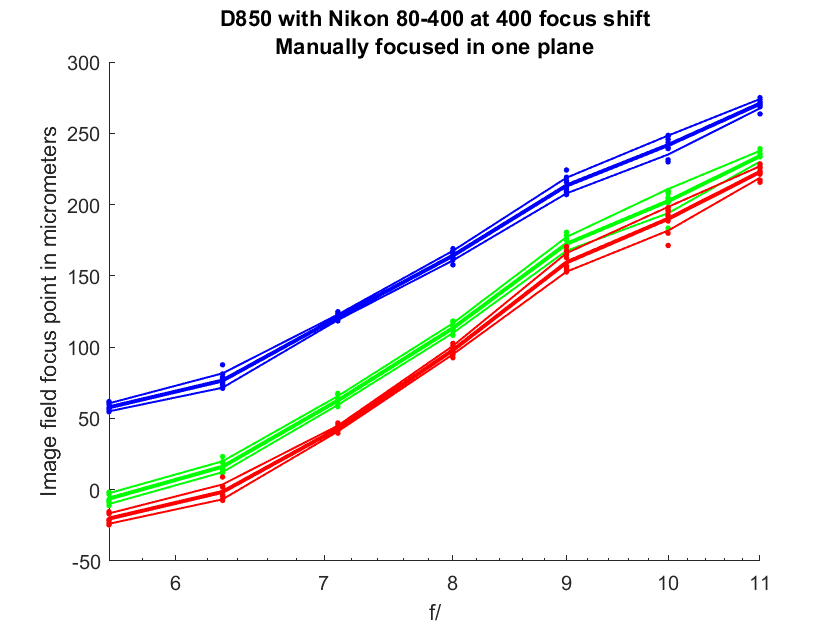
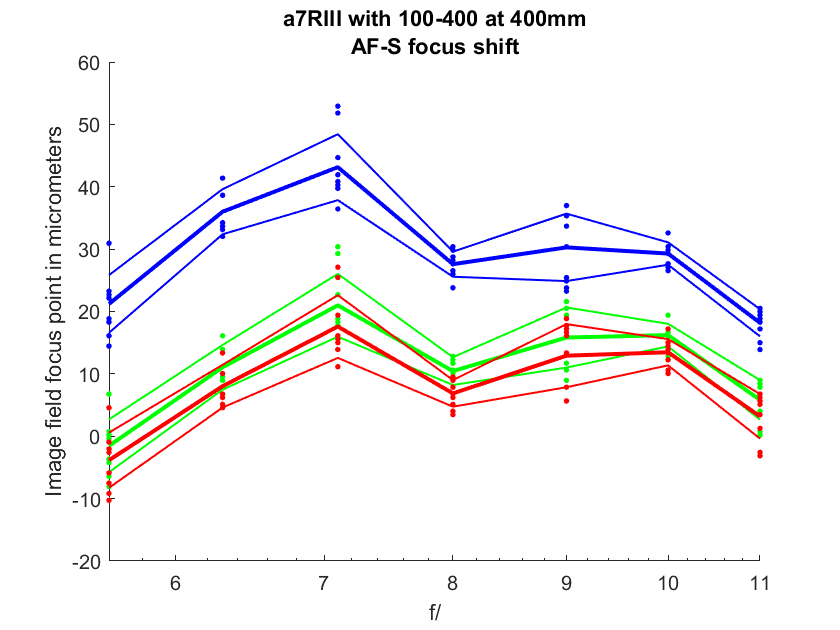
Jim,
Another excellent post, and one that is disconcerting for Nikon users.
Focus shift can vary with focusing distance and Lloyd Chambers states that with most Nikon lenses this shift is greatest at near focusing distances and lessens with distance. I see that you are testing in your basement. Do you think your results would apply for shooting outdoors at greater focusing distances?
What are your suggestions for us Nikon shooters stuck with the 80-400 VRII? For relatively static scenes, one could focus at the shooting aperture using live view and contrast detect focus or manual focus with magnification .
Regards,
Bill
Your point about focus shift varying with distance is probably accurate. Maybe Brandon can comment on undercorrected spherical aberration, which this appears to be, and how that affects focus shift with distance. That’s well above my pay grade.
Live view focusing stopped down is accurate. Magnified MF is of course accurate. Did you see the comment to the previous post about taping a table to your lens hood?
Jim, I did see that comment and it is a good one. However, I have not yet fine-tuned my 80-400. I use Reikan Focal and they suggest a distance of 25-50x the focal length, which would be 8 – 16 meters for fl = 400 mm. I can do 8 meters in my basement, but not 16m. It’s cold here in northern Illinois and I hesitate to go outside. It is snowing now 🙁
I use the Nikon D5 abd the D850 (lately, replacing the d810) with many Nikon lenses, invluding the 80-400 tested here. i also use the Sony a7r2 and a9 with many Sony and Zeiss lenses invluding the new fe 100-400 tested here.
My experience is that with Sony, with any of the lenses, the pictures are sharper thencwith Nikon with equivalent lense.
I related it to the built-in stabilization, bit it seems that there are additional reasons as demonstrated here. I also see in many test reports (dxo matk) that Sony consistently scores higher for similar lenses.
Question to Jim: I give Nikon engineers the credit that they are as good as Sony’s ones. Is it easier to design lenses (or get better performance) for mirrorless camera (a7r3) then for one with mirror (D850)?
Removing constraints always makes things easier for a lens designer, and the E-mount has a relaxed constraint when compared to the F-mount in that it’s flange focal distance is 18 mm (that’s why it’s called E-mount). That said, I don’t think that is important when talking about zoom lenses whose shortest focal length is 80 mm.
I think the long pole in the tent is that’s it’s easier to design an AF system that is accurate (but maybe not fast) using a combination of on-sensor PDAF and CDAF than just using finder PDAF. The 100-400 is definitely sharper than the 80-400 at 100 mm, though.